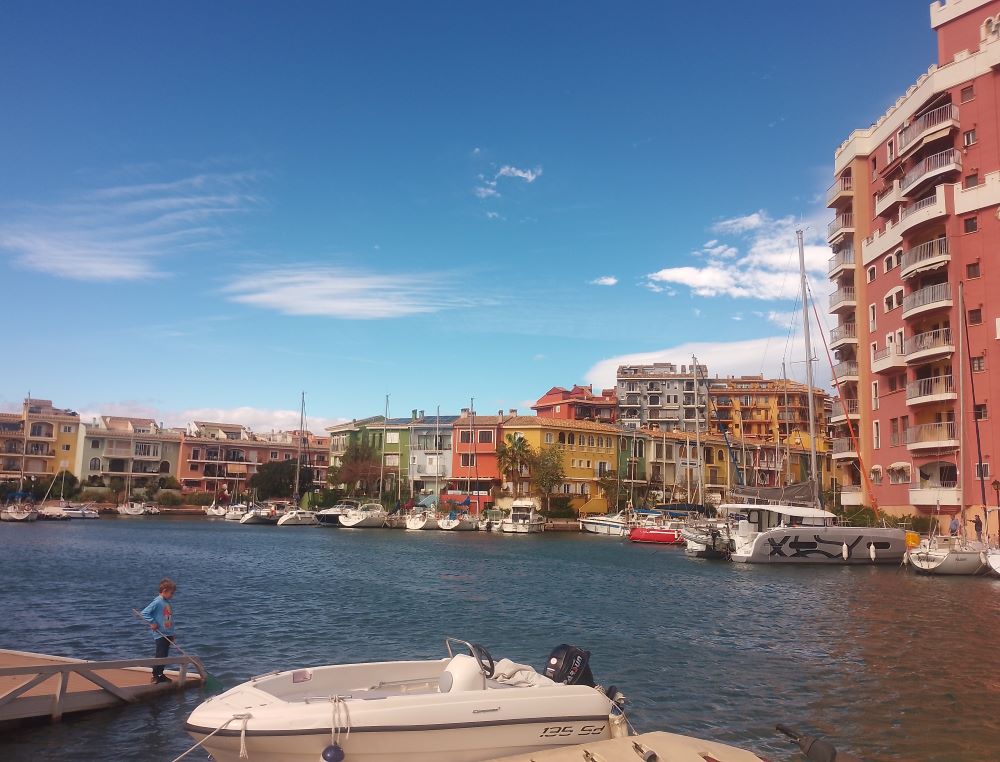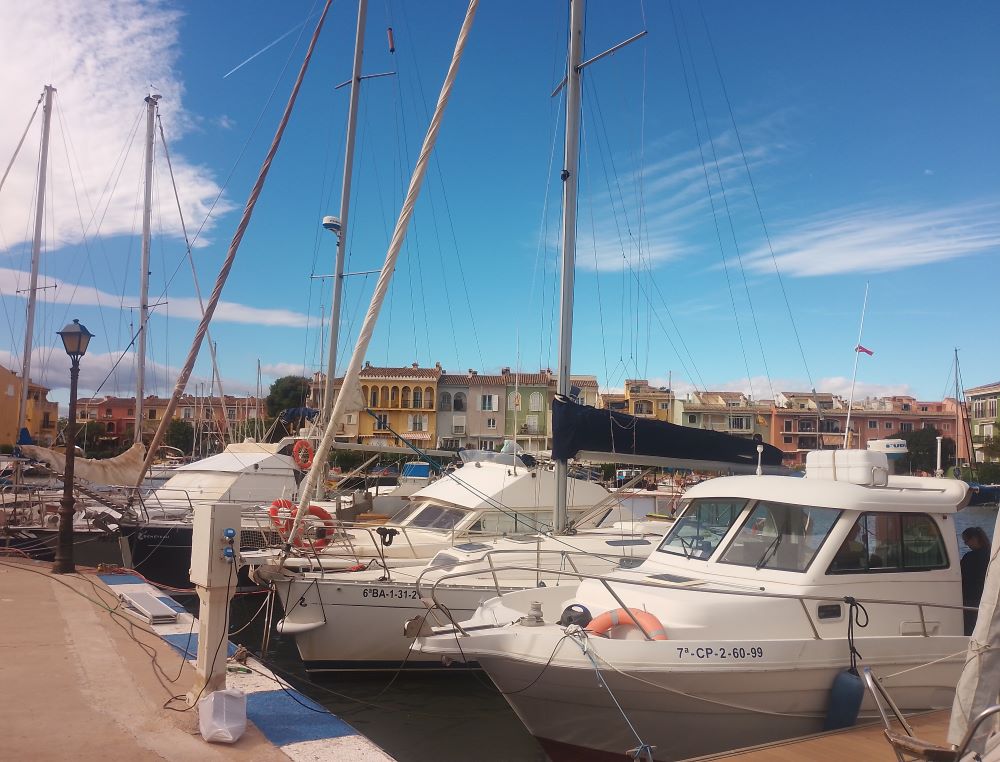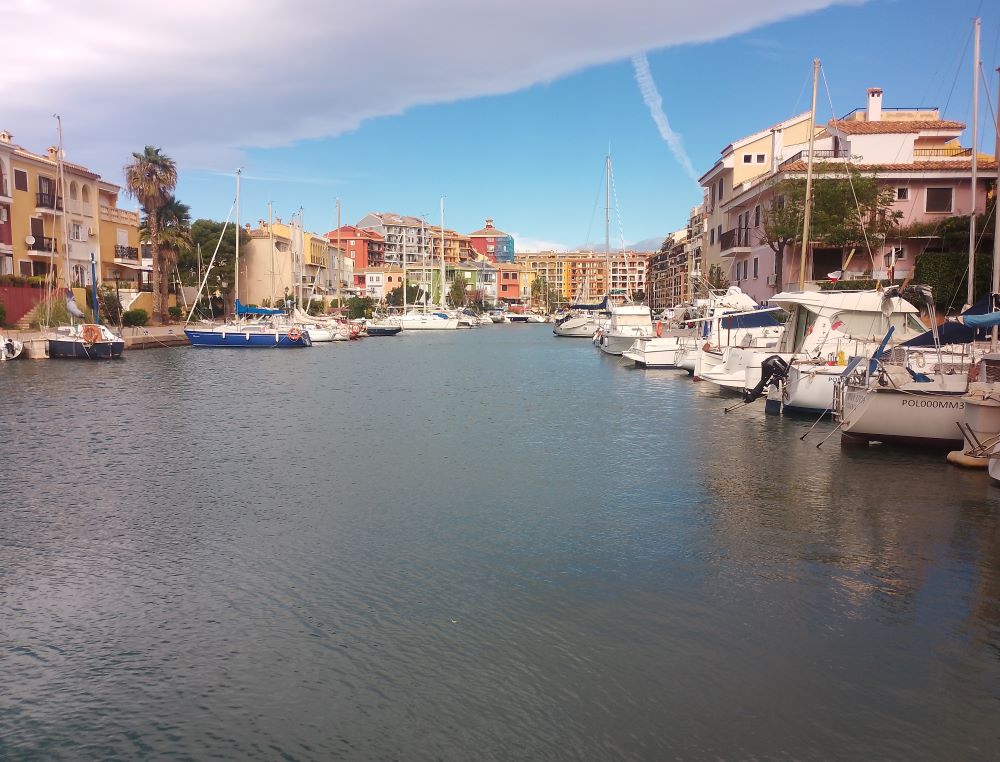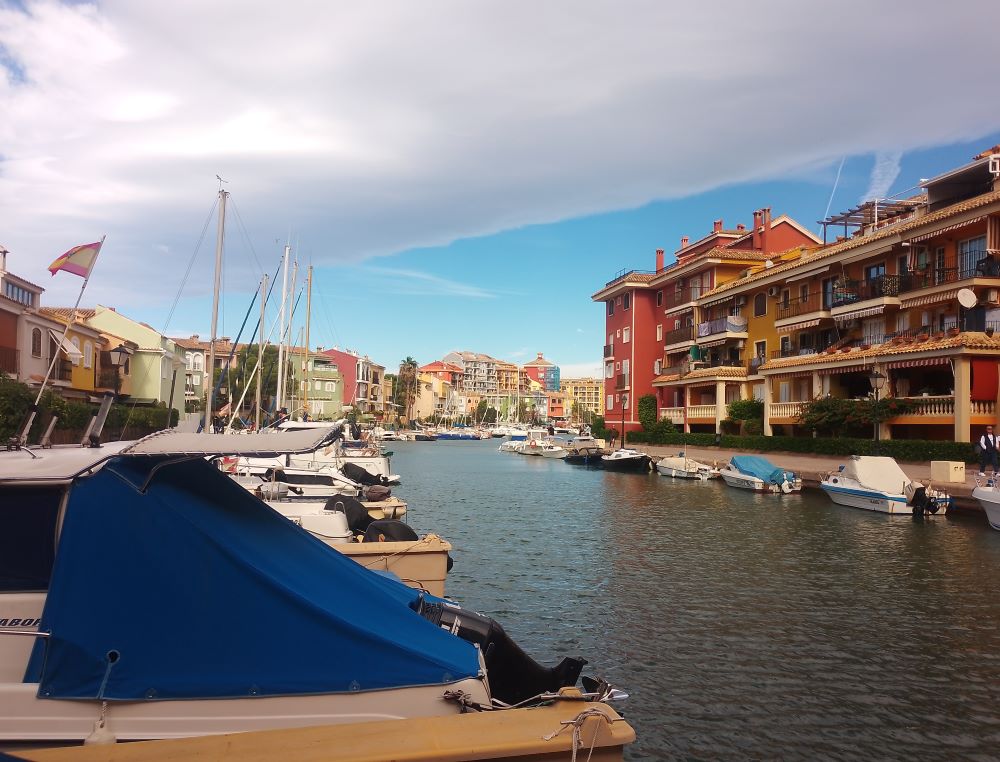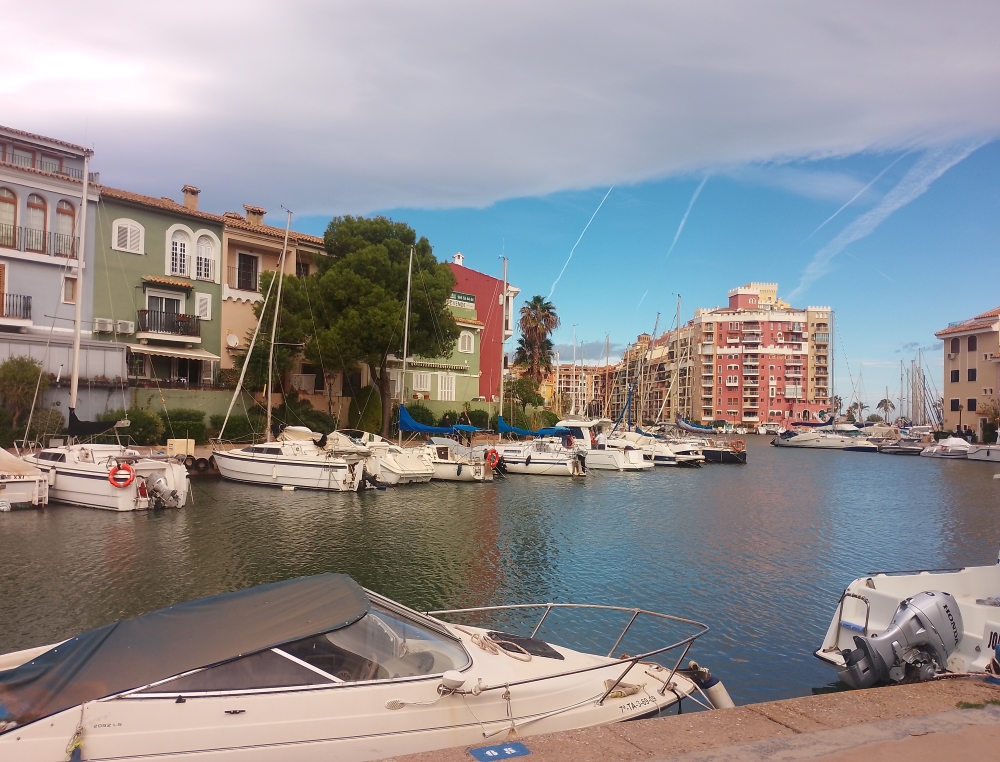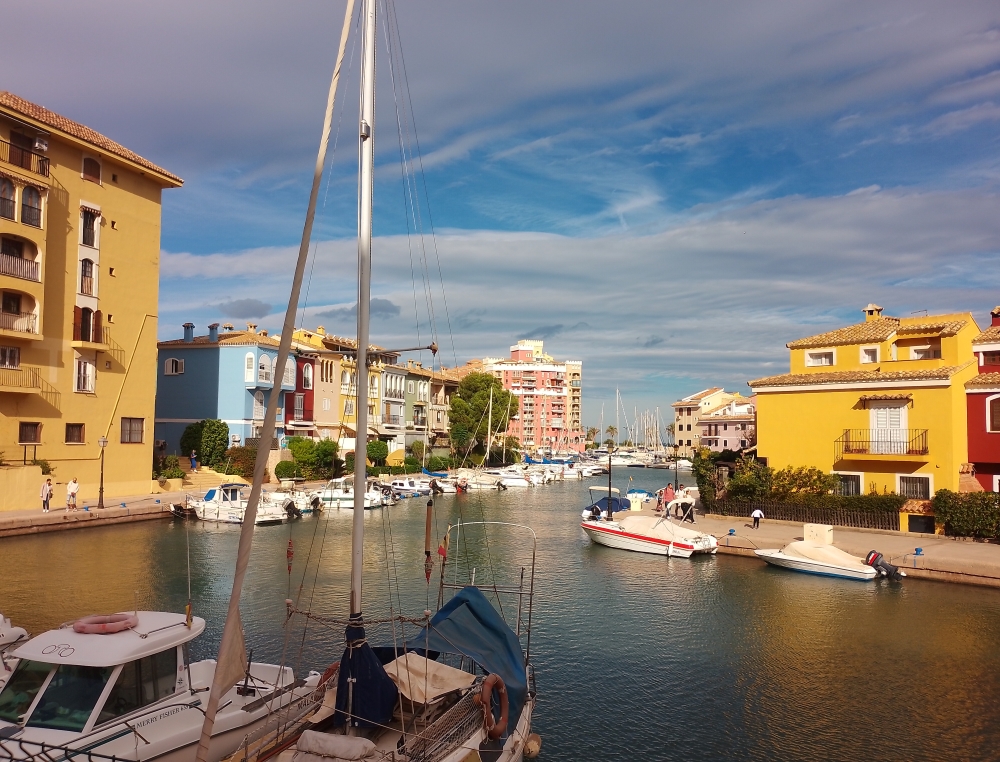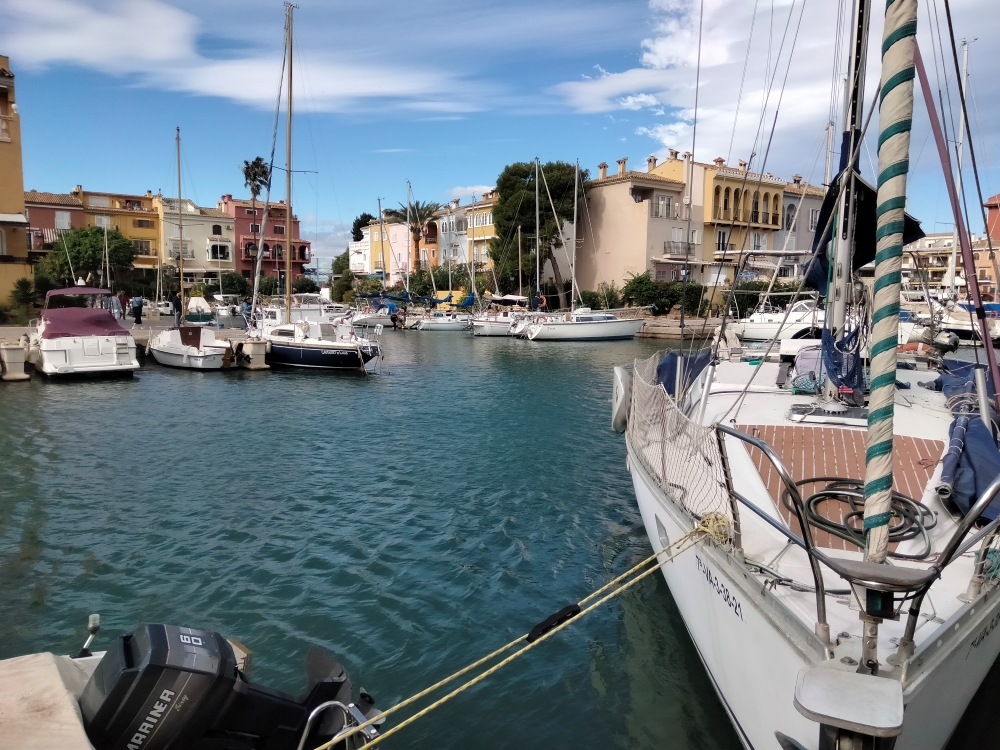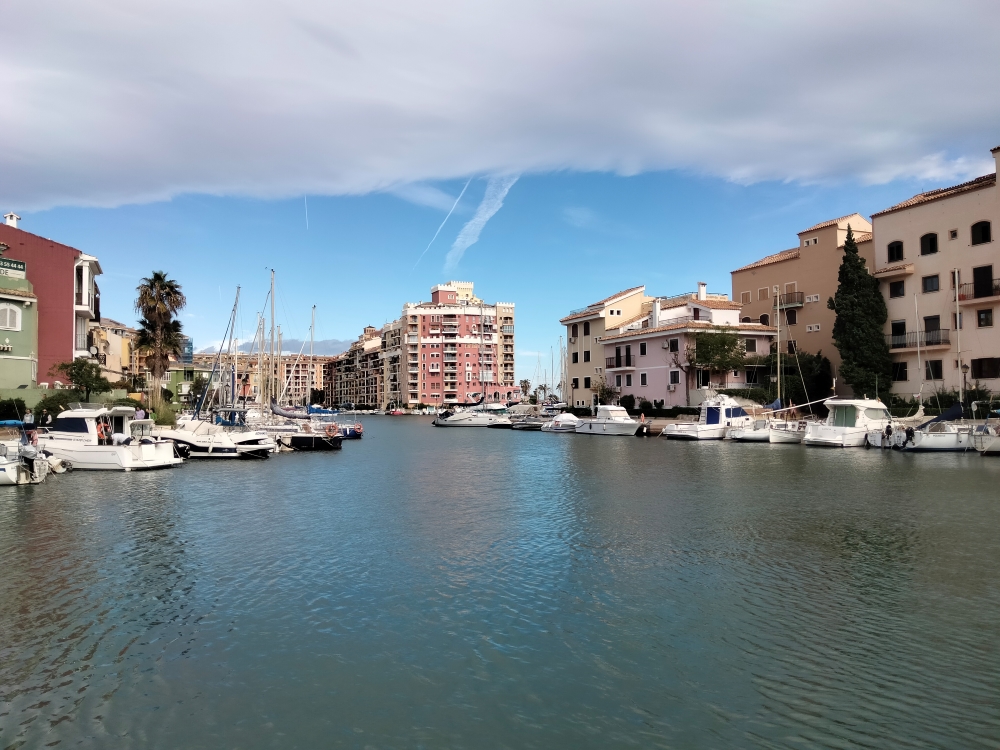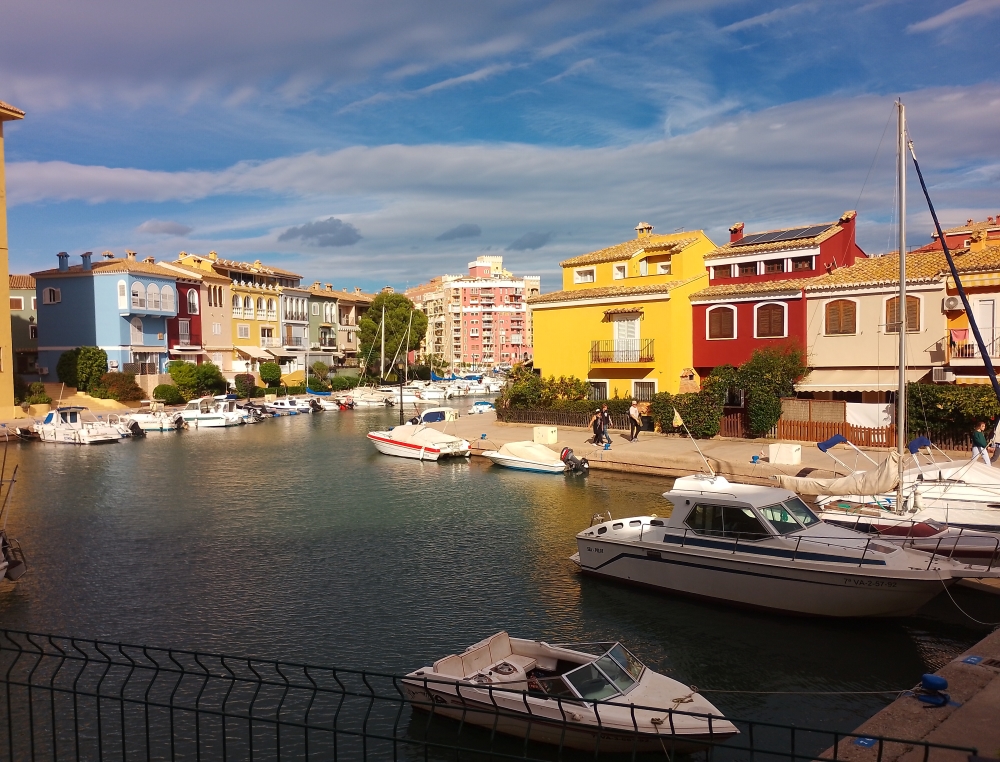
Port Saplaya is known as the ‘La Pequeña Venice’, a residential port area a few kilometres north of the city of Valencia and home to almost 2,000 people. First developed in the 1970s from an abandoned sea port, the pedestrianised zone consists of an access channel from the sea to a marina that consists of several “bays” lined with colourful apartment blocks and houses as well as a couple of squares lined with restaurants and bars.
There are also two wide beaches either side of the access channel, one of which has a promenade also lined with popular restaurants and bars as well as a large commercial centre.
It’s a great outing for all the family just a short drive from Xàbia.
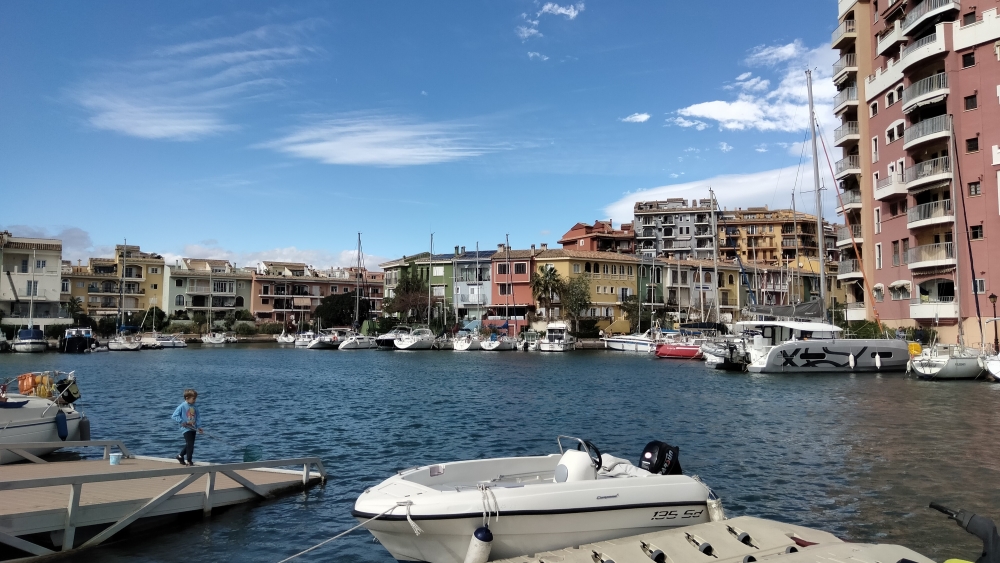
Getting There
Port Saplaya is about 90 minutes’ drive from Xàbia, situated about five kilometres to the north of the centre of the city of Valencia. The quickest route takes the AP-7 north to junction 527 “[V-31] València · Puerto” when it joins the V-31 into the city. Any GPS route planner will take you through the city of Valencia via Avenida d’Ausias March to the roundabout at Plaza Manuel de Sanchis Guarner when you’ll turn right into Avenida de Peris i Valero and follow it all the way to cross the dry river bed and then take Calle d’Eduard Boscà, Avinguda del Cardenal Benlloch and then Calle del Clariano to pass through a tunnel to join the V-21 towards Teruel and Barcelona. After almost four kilometres, leave the motorway at junction 2 “ALMASSERA · ALBORAYA · Platge” and follow the signs towards the beach (“platge”).
There is plenty of parking at the commercial centre but if you take the second exit at the roundabout and follow the narrow road alongside the promenade, there is a small car park at the end which is open to the public. It is manned and costs just 3 euros for the first three hours and then 55 cents for each hour afterwards.
Opening Hours
24 hours
Admission Price (2023)
The pedestrianized marina zone is open to the public and free.
Port Saplaya
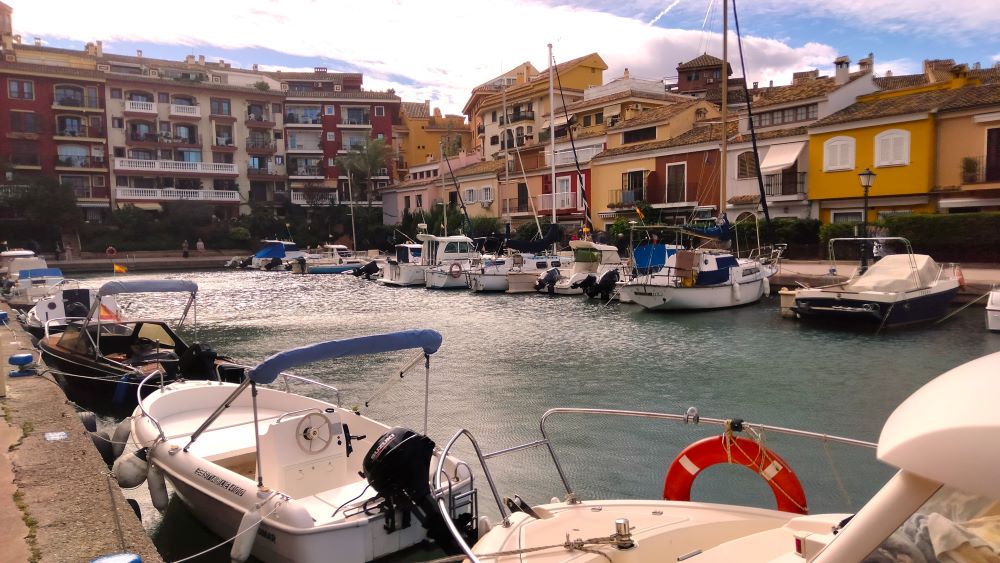
The marina is a small enclave of five canals surrounded by promenades and residential buildings with boats moored at street level, all features which have given it the nickname “La Pequeña Venice – Litte Venice”. It is a joy to walk along the promenades (no vehicles are allowed) from one side of the access channel right around to the other side where there is another quieter beach area.
Divided into two halves by the central canal which gives access to the Mediterranean Sea, there are two large squares at either end – Plaza Mayor and Plaza de la Señoría – both of which are lined with popular restaurants and bars. The former is the more popular whilst the latter is little quieter.
There are two beaches either side of the access channel. The southern beach is more popular, lined by a row of restaurants for part of it and a long wide promenade for its entire length from the access channel down to the mouth of the river Carraixet. The northern beach, known as Playa de Meliana, stretches for 1.5 kilometres and is much quieter.
Next to the marina zone, to the south, is a commercial centre with a large supermarket, shops, restaurants and fast-food outlets.
Restaurants and Bars
There are plenty of options for eating and drinking. We enjoyed a very nice welcome and a good strong coffee at Náutico-Restaurante Portsaplaya right next to the access channel before taking a walk around the marina.
For lunch, we had heard some good things about the Argentine grill Restaurante De Carne y Hueso in Plaza Mayor which had a nice view looking down one of the canals towards the central basin of the marina. Very tasty food was served by very friendly staff and we recommend strongly the meat options (chuletón, entrecôte and churrasco) as well as the enchaladas.
Port Saplaya and the surrounding areas are renowned for ‘horchata’, a traditional Valencian sweet drink known as “tiger nut milk”, and it is common to dip local pastries known as ‘fartons’ into the liquid.
Photo Gallery
Click on an image to enlarge it.
